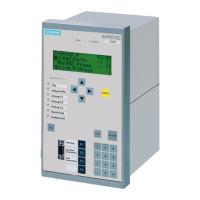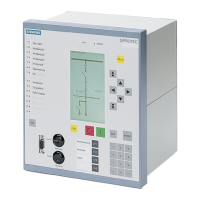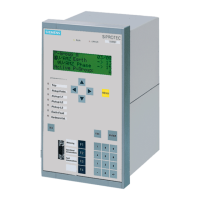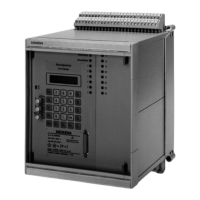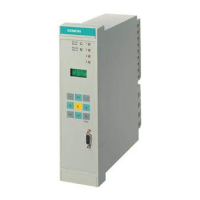[fo_einstellwert-k-faktor_01, 1, en_US]
Time Constant τ
The overload protection tracks overtemperature progression, employing a thermal differential equation whose
steady state solution is an exponential function. The TIME CONSTANT τ
th
(set at address 4203) is used in the
calculation to determine the threshold of overtemperature and thus, the tripping temperature.
For cable protection, the heat-gain time constant τ is determined by cable specifications and by the cable envi-
ronment. If no time-constant specification is available, it may be determined from the short-term load capa-
bility of the cable. The 1-sec current, i.e. the maximum current permissible for a one-second period of time, is
often known or available from tables. Then, the time constant may be calculated with the formula:
[einstellwert-tau-260602-kn, 1, en_US]
If the short-term load capability is given for an interval other than one second, the corresponding short-term
current is used in the above formula instead of the 1-second current, and the result is multiplied by the given
duration. For example, if the 0.5-second current rating is known:
[einstellwert-tau-05s-260602-kn, 1, en_US]
It is important to note, however, that the longer the effective duration, the less accurate the result.
Example: Cable and current transformer with the following data:
Permissible continuous current
Ι
max
= 500 A at Θ
u
= 40 °C
Maximum current for 1 s
Ι
1s
= 45 · Ι
max
= 22.5 kA
Current transformer 600 A/1 A
Thus results:
[formel-k-0833-260602-kn, 1, en_US]
[formel-tau-3375-260602-kn, 1, en_US]
The settings are: 49 K-FACTOR = 0.83; TIME CONSTANT = 33.75 min
Warning Elements
By setting the thermal warning element 49 Θ ALARM (address 4204), a warning message can be issued
before reaching the tripping temperature. Tripping can thus be avoided by initiating early load reduction
measures. This warning element simultaneously represents the dropout level for the trip signal. Only when
this threshold is undershot, tthe tripping command will be reset and the protected equipment can be switched
on again.
The thermal element level is given in % of the tripping overtemperature.
A current warning level is also available (parameter 4205 I ALARM). The setting is set as the secondary
current in A (mperes) and should be equal to or slightly less than the permissible current k · Ι
Nom sec
. It can be
Functions
2.7 Thermal Overload Protection 49
SIPROTEC 4, 7SJ61, Manual 117
C53000-G1140-C210-6, Edition 05.2016
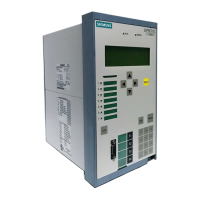
